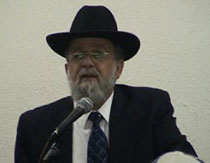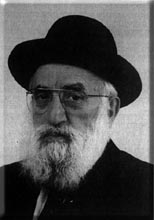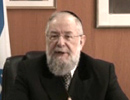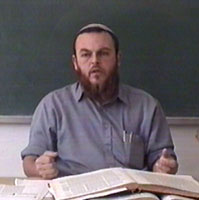Beit Midrash
- Torah Portion and Tanach
- Shmot
- Tetzave
- Sections
- Chemdat Yamim
- Parashat Hashavua
The efod (roughly, an apron) covered the kohen gadol’s torso. Over the efod was the choshen (breastplate). The two were connected by a blue string, whose purpose the Torah describes as "v’lo yizach hachoshen me’al ha’efod" (the breastplate shall not be separated from the efod) (Shemot 28:28). Remember this pasuk as we take a look at the linguistic proof that an important gemara learns from it.
The gemara (Chulin 6b-7a) tells the story of R. Yehuda Hanasi, who arrived at a major leniency regarding ma’asrot (tithes) in the region of Beit She’an. He was asked how he could do such a thing considering that his predecessors had assumed differently than he. If his thesis were true, would his more illustrious predecessors have missed it? He answered by citing a pasuk about Chizkiyahu (Melachim II, 18) who destroyed the copper snake that Moshe had used in the desert because people were attributing powers to it and straying from Hashem. Although previous great removers of idolatry, Asa and Yehoshafat, had left it, the "Heavens left room for him to act with greatness." So too, said R. Yehuda, the Heavens left him room to uncover information that warranted changing the assumptions about Beit She’an.
The gemara concludes that from here we learn that if a talmid chacham says something surprisingly novel, we do not pressure him to retract it (Rashi, ad loc.). The gemara gives three similar-sounding options for the word used to be tolerant of the talmid chacham. One of them, mazichin is derived from our pasuk, "lo yizach," do not separate. At first glance, use of our pasuk is only technical/linguistic. However, there may be more to it.
How can we trust a rabbi to arrive at something that appears new? Isn’t Torah scholarship based on tradition, not innovation? The choshen (hamishpat) is named for its connection to expertise in the field of justice and is the base for the urim v’tumim, which reveals Divine secrets. The gemara may be hinting that in any generation, a true "secret" can be uncovered with Divine assistance. Even the discovery’s timing may be Divine. On the other hand, there is an important implied condition. It is forbidden to remove the choshen from the efod, which must be connected by a special string (Yoma 72a). As the efod served as atonement for idol worship (Zevachim 88b), it must work positively with the heart it covers to connect one to fear of Hashem. Similarly, a Torah innovator must be connected by a chain of tradition to the Torah and fear of Hashem, like R. Yehuda Hanasi. Then he is entitled to the benefit of the doubt that his ideas are not a break from a tradition but an addition of a link.

Various Rabbis
Various Rabbis including those of of Yeshivat Bet El, such as Rabbi Chaim Katz, Rabbi Binyamin Bamberger and Rabbi Yitzchak Greenblat and others.

Proper Foundations of the Home
Ein Aya Shabbat Chapter B Paragraph 192
Tevet 12 5777

Responsibilities Based on Different Modes of Influence
Sivan 26 5777

A Husband’s Obligation in His Wife’s Loan
5775

























